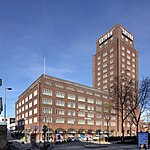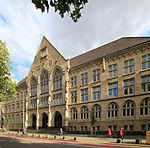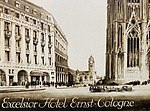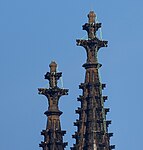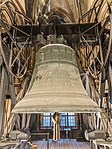Basilica of St. Ursula, Cologne
5th-century churchesBasilica churches in GermanyInnenstadt, CologneMinor basilicas in GermanyOssuaries ... and 2 more
Roman Catholic churches in CologneRomanesque architecture in Germany

The Basilica church of St. Ursula (German: [ˌzaŋt ˈʔʊʁzula], Colognian: [ˌtsɪnt ˈʔoʒəla]) is located in Cologne, North Rhine-Westphalia, Germany. It is built upon the ancient ruins of a Roman cemetery, where the 11,000 virgins associated with the legend of Saint Ursula are said to have been buried. The church has an impressive reliquary created from the bones of the former occupants of the cemetery. It is one of the twelve Romanesque churches of Cologne and was designated a Minor Basilica on 25 June 1920. While the nave and main tower are Romanesque, the choir has been rebuilt in the Gothic style.
Excerpt from the Wikipedia article Basilica of St. Ursula, Cologne (License: CC BY-SA 3.0, Authors, Images).Basilica of St. Ursula, Cologne
Ursulaplatz, Cologne Altstadt-Nord (Innenstadt)
Geographical coordinates (GPS) Address External links Nearby Places Show on map
Geographical coordinates (GPS)
| Latitude | Longitude |
|---|---|
| N 50.945833333333 ° | E 6.9544444444444 ° |
Address
St. Ursula
Ursulaplatz 30
50668 Cologne, Altstadt-Nord (Innenstadt)
North Rhine-Westphalia, Germany
Open on Google Maps



